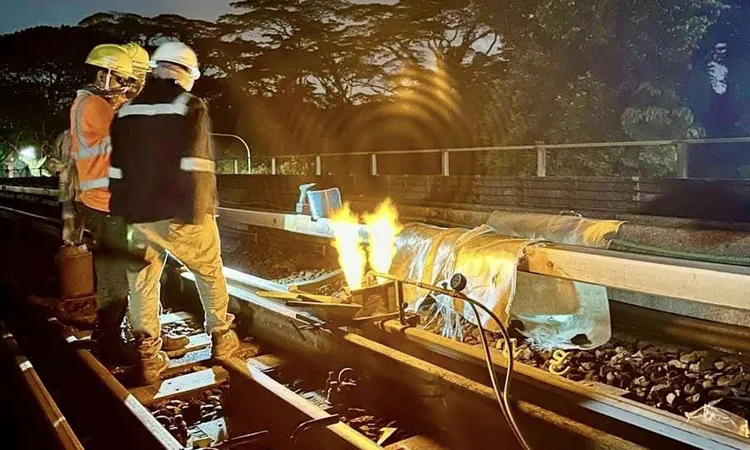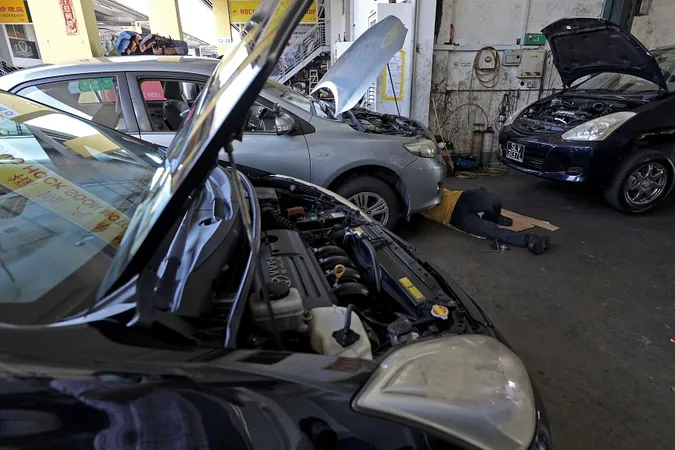
SMRT Privatization: A Veil Over Transparency or Strategic Transformation?
2024-09-30
Introduction
In 2016, Singapore’s public transport operator SMRT underwent a significant transformation when it was privatized under Temasek Holdings. This strategic shift was framed as a move toward achieving long-term objectives while alleviating the pressures typical of publicly listed corporations. Proponents of the privatization emphasized the need for an agile response to the nation's public transportation challenges, particularly with the longstanding issues surrounding an aging rail system that had already prompted board-level resignations after the notorious service breakdowns of 2011.
The Case for Privatization
Temasek Holdings argued that privatization would allow SMRT the flexibility to focus on its critical mission—delivering safe and reliable rail services—without the looming pressures of financial markets, especially amid the rollout of a transformative regulatory approach known as the New Rail Financing Framework.
Service Disruptions and Scrutiny
However, the dramatic failures in service during 2023, particularly along the East-West Line, have catalyzed fresh scrutiny about the efficacy of privatization. A crucial question emerges: Has the shift to privatization genuinely improved service delivery, or has it obscured important aspects of operational transparency too?
The Transparency Paradox
The annual financial disclosures from SMRT reveal a stark contrast in transparency pre- and post-privatization. Prior to privatization, SMRT's reports were detailed, providing insights into executive compensations, maintenance expenditures, and a thorough breakdown of revenue and costs. This level of transparency allowed stakeholders to assess financial allocations, particularly concerning crucial maintenance budgets.
However, post-privatization disclosures have become less informative. The 2023 reports lacked granularity on maintenance spending and failed to clarify whether these operations were conducted internally or farmed out to contractors. Instead of transparency, stakeholders encountered vague generalities around maintenance policies and executive pay, instigating concerns regarding the company’s financial management and its implications for public safety in transport operations.
Maintenance vs. Cost-Cutting
The significant disruptions seen in 2023, particularly along the East-West Line, have starkly illustrated potential maintenance oversights linked to privatization practices. The absence of detailed financial reporting obstructs verification about whether proper funding is devoted to maintenance or if austerity measures have compromised oversight, thus increasing reliance on potentially less accountable subcontractors.
In a June 2023 interview, SMRT Chairman Seah Moon Ming expressed the intention of maintaining a balance between essential maintenance and cost control—a delicate act that now seems to coincide with service disruptions rather than service improvements. Despite claims from the chairman regarding reliability improvements, the lack of accessible financial data complicates public faith in the company's maintenance strategies.
Technology, including data analytics, has been highlighted as a tool for enhancing maintenance efficiency; yet, without proper transparency, the community cannot ascertain if these advancements translate to tangible service reliability.
Call for Accountability and Transparency
As Singapore endures some of the most severe transport interruptions in its history, there is an urgent need for SMRT to recalibrate its approach to transparency. When privatization is deployed as a remedy for operational efficacy, it should inherently come with a commitment to openness.
This situation draws striking parallels to governance and trust in public institutions, especially when incidents lead to disruptions impacting public life. A balancing act between maintaining profitability and ensuring high-quality public service needs to be reassessed in light of ongoing failures.
Power Dynamics and Governance
Including critiques of other prominent figures such as Ho Ching, former CEO of Temasek and the wife of Singapore's Prime Minister, raises questions around the intertwining of governance and personal relationships within Singapore's corporate structures. Allegations regarding her substantial salary, teeming skepticism around her prolonged leadership, and questions regarding succession planning amid a backdrop of political and economic ties, intensify this narrative.
Conclusion
Overall, Singapore’s governmental and corporate landscape must foreground transparency and accountability, especially with public officials entangled in legal investigations. As legal frameworks and prosecution standards are scrutinized, citizens deserve consistent and robust protections against corruption, as well as clarity about how their public transport system is managed.
The ST has reported improvement in services post-privatization; however, the ongoing struggles emphasize a critical reality: without clear and accessible information, public confidence teeters on uncertainty. The implications of these developments remain significant—not just for SMRT but for the overarching trust in Singapore's public service management.
This emerging situation demands a restructuring of priorities and the fostering of a more open discourse about the management and efficiency of vital public services—one deserving the scrutiny and trust of the communities they serve.



 Brasil (PT)
Brasil (PT)
 Canada (EN)
Canada (EN)
 Chile (ES)
Chile (ES)
 España (ES)
España (ES)
 France (FR)
France (FR)
 Hong Kong (EN)
Hong Kong (EN)
 Italia (IT)
Italia (IT)
 日本 (JA)
日本 (JA)
 Magyarország (HU)
Magyarország (HU)
 Norge (NO)
Norge (NO)
 Polska (PL)
Polska (PL)
 Schweiz (DE)
Schweiz (DE)
 Singapore (EN)
Singapore (EN)
 Sverige (SV)
Sverige (SV)
 Suomi (FI)
Suomi (FI)
 Türkiye (TR)
Türkiye (TR)